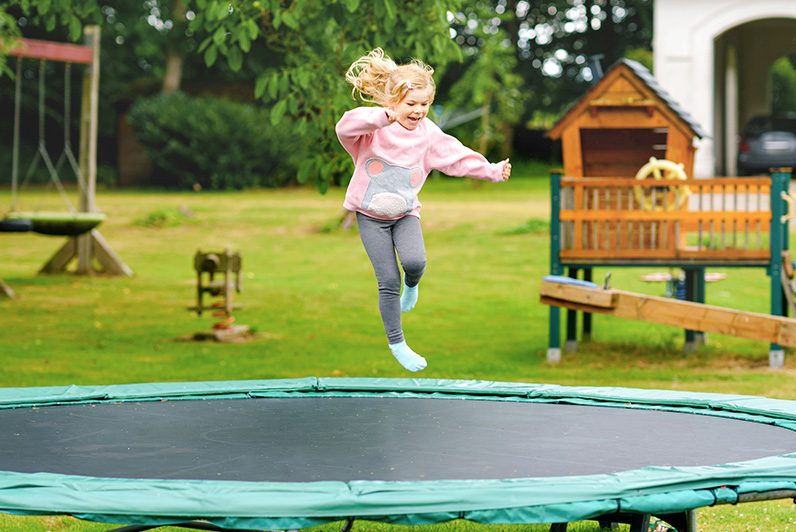by Stapleton Insurance | Apr 13, 2022
Spring can bring about some of the year’s most dangerous weather and wreak havoc on many aspects of a company’s operations. This article discusses the weather threats to watch out for during spring and measures businesses can take to minimize damage.
Dangerous Spring Weather
 Unexpected severe weather increases the risk of property damage, injury and even death. Here are some common types of spring weather events:
Unexpected severe weather increases the risk of property damage, injury and even death. Here are some common types of spring weather events:
- Tornadoes — According to AccuWeather, tornadoes are by far the most extreme event in the spring. Winds from tornadoes can exceed 200 miles per hour, sending debris flying.
- Thunderstorms — Severe thunderstorms can produce strong winds, large hail and lightning. If lightning strikes in a dry area, fires can occur.
- Flooding — Snowmelt, ice jams and heavy rain can produce large amounts of water runoff in a short period of time, resulting in floods.
- Blizzards — Snowstorms that occur in the spring may cause power outages or property damage. They can also force businesses to shut down.
- Excessive heat — The second half of spring typically brings higher temperatures, leading to heat-related disorders or illnesses if employees work in outdoor environments.
Minimizing Risks
While springtime weather may be unpredictable, businesses can minimize risks to both people and property by preparing for all situations. Business leaders should consider the following precautions:
- Develop a plan. If employees have to travel to work, severe spring weather could put them in danger on the road. In addition, shelter-in-place orders or power outages could also pose threats to onsite employees, clients and customers. Having a plan in place can help everyone remain safe during an emergency. Outline what employees should do in different circumstances—such as a power loss—and have a communication protocol. Conduct drills until the plan becomes second nature.
- Keep an emergency kit on hand. This kit should contain emergency supplies, including flashlights, water, a first-aid kit, blankets, extra batteries, a toolset and current contact information for state and local entities.
- Secure the property and outdoor assets. Dead trees, weak structures and unsecured materials can become airborne hazards during windstorms, damaging buildings or external systems. If severe weather is in the forecast, complete preventive maintenance, close windows securely, bring outdoor furniture inside and clear out storm drains.
- Back up data. Severe weather can cause power outages and may physically damage equipment. Back up critical data often to help smoothly rebuild systems.
- Obtain proper insurance coverage. An experienced insurance broker can help business leaders understand and plan for the impacts of catastrophic weather. Complete a coverage review to ensure there are no gaps in coverage that will result in an uncovered loss.
By minimizing the opportunity for property damage, preparing employees to act and working with an experienced broker to ensure the appropriate insurance coverage is in place, businesses can better mitigate risks during the springtime. For more information, contact us today.
by Stapleton Insurance | Mar 30, 2022
The pandemic has put employee health and wellness in the spotlight. Given the pandemic’s immediate and lasting impacts on employee health, many employers are expanding their wellness offerings in 2022.
Here are three employee wellness trends to look out for this year:
1. Expanded Mental Health Resources
Many workers continue to battle stress and anxiety in their personal and work lives. Mental health benefits are one way to support employees—and they matter to workers. According to a Calm for Business workplace mental health survey:
Employers are investing in employees’ mental health with:
- Mental health-related healthcare offerings
- Expanded telebehavioral health
- Robust employee assistanceprograms
- Increased use of mental health apps
2. Increased Focus on Hybrid Work-Life Balance
As the boundaries between work and home are blurred, remote and hybrid employees may experience burnout.
To aid in employees’ work-life balance, employers can offer comprehensive wellness offerings, including:
- Robust mental health resources and support
- Increased schedule flexibility
- Time off for mental health or recharging
3. Expanded Financial Wellness Resources
Finances are ranked as the top source of stress by 73% of Americans, according to a CreditWise survey.
Some common employee financial goals are as follows:
-
Building an emergency savings
-
Choosing the proper health insurance and benefits
-
Preparing for significant life events
-
Saving for retirement
Employers can help support employees’ goals and reduce fiscal stress by exploring financial wellness resources and support options, including:
by Stapleton Insurance | Mar 23, 2022
 Trampolines can provide hours of entertainment and fun for the whole family – especially young children. However, having a trampoline on your property can also carry numerous liability risks. Specifically, if a visitor or loved one gets hurt while using your trampoline, you could potentially be held responsible for the cost of their injuries. To protect yourself from trampoline liability concerns, consider the following guidance:
Trampolines can provide hours of entertainment and fun for the whole family – especially young children. However, having a trampoline on your property can also carry numerous liability risks. Specifically, if a visitor or loved one gets hurt while using your trampoline, you could potentially be held responsible for the cost of their injuries. To protect yourself from trampoline liability concerns, consider the following guidance:
- Always supervise all jumpers on the trampoline, regardless of their ages or experience levels.
- Restrict the number of jumpers permitted on the trampoline at one time.
- Don’t allow children under the age of 6 use the trampoline.
- Avoid pacing a ladder near the trampoline. Doing so could encourage younger children to climb it without permission and start jumping.
- Prohibit jumpers from doing somersaults of flips on the trampoline, as they could land on their necks or heads incorrectly and experience serious injuries.
- Never allow jumpers to use the trampoline as a way to jump onto other objects.
- Securely attach safety padding to cover the hooks, springs and frame of the trampoline.
- Set up the trampoline on level ground, away from trees and other obstacles.
- Install safety netting around a trampoline to provide proper fall protection.
- Inspect the trampoline before each use to make sure the springs are secure and that the bed doesn’t have any tears or holes. Don’t allow anyone to use the trampoline if it is damaged.
Attractive Nuisances Explained
Trampolines are considered attractive nuisances – items that are attractive and enticing to children. If kids are walking by your home and spot the trampoline in your backyard, they may be tempted to sneak onto it and start jumping. In the event that they suffer an injury on your property, you could ultimately be held liable.
To protect yourself, consider fencing in your yard and never allow unsupervised individuals to use the trampoline when you are not present. For more personal risk management guidance and homeowners insurance solutions, contact us today.
by Stapleton Insurance | Nov 19, 2021
If you’re nearing retirement age, or are over 65 and still working, you may have questions about Medicare. Read on for the information you need to know. View our Medicare 101 Flyer
 Unexpected severe weather increases the risk of property damage, injury and even death. Here are some common types of spring weather events:
Unexpected severe weather increases the risk of property damage, injury and even death. Here are some common types of spring weather events:
 Trampolines can provide hours of entertainment and fun for the whole family – especially young children. However, having a trampoline on your property can also carry numerous liability risks. Specifically, if a visitor or loved one gets hurt while using your trampoline, you could potentially be held responsible for the cost of their injuries. To protect yourself from trampoline liability concerns, consider the following guidance:
Trampolines can provide hours of entertainment and fun for the whole family – especially young children. However, having a trampoline on your property can also carry numerous liability risks. Specifically, if a visitor or loved one gets hurt while using your trampoline, you could potentially be held responsible for the cost of their injuries. To protect yourself from trampoline liability concerns, consider the following guidance:
Recent Comments